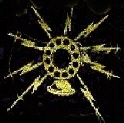
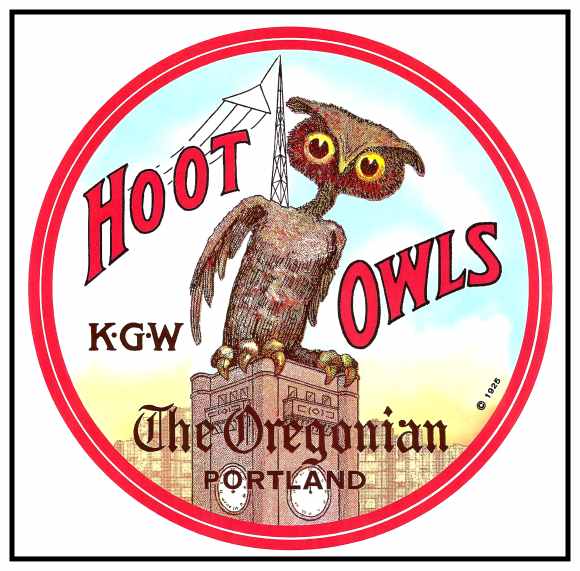
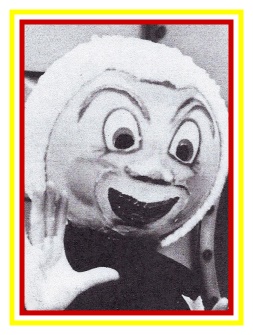
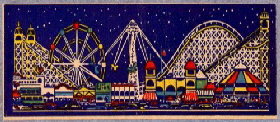

 |
 |
 |
 |
|||
 |
||||||
 |
|||||||||||||||||||||||||
 |
|||||||||||||||||||||||||
|
|
|||||||||||||||||||||||||
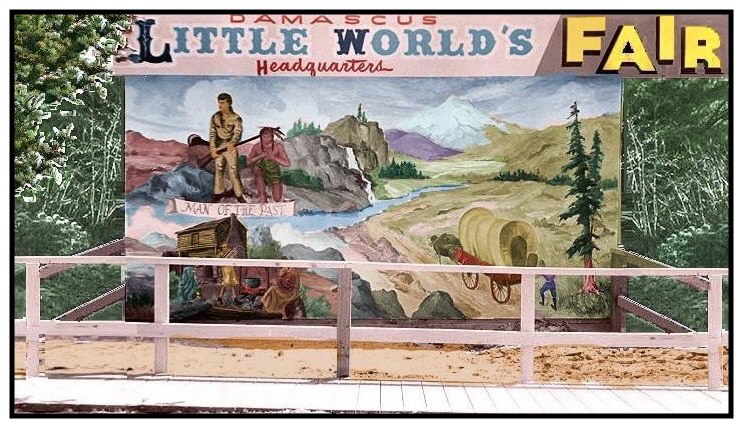 |
|||||||||||||||||||||||||
 |
|||||||||||||||||||||||||
|
Damascus is a small community southeast of Portland, at the end of Foster Road, nine miles from 82nd Avenue. Its first settlers moved there in the 1850s. Edward Pedigo, a potter who moved there from Iowa in 1854 is credited with thinking of the name Damascus. He was drawn to the rich red clay on the hills above the Clackamas River that would make his bean pots and jars famous. The year was 1866, and a group of locals had gathered at the crossroads store to find a suitable name for their school and post office. The battles of the civil war were still within memory and as Ed Pedigo came riding in on his horse, he was struck by the phrase “The Place of a New Beginning”. Pedigo’s thoughts had reminded him of Saul of Tarsus who had set out on a journey from Jerusalem. As Saul approached the walls of Damascus in Syria, he was transformed after meeting the Savior. Pedigo the Potter suggested they name their town after Damascus. All the locals agreed and so did Uncle Sam, as the Damascus Post Office was established on Aug. 26, 1867. Pedigo would bring the mail once a week from Milwaukie on his horse along an old Indian trail. Eventually the town grew and more frequent mail service became necessary. Development out from Portland had progressed to nearby Gresham and the streetcar went from Gresham to Damascus’ neighbor, Boring, and on to Estacada, bypassing Damascus. Boring’s Post Office became the central mail distribution point for the whole area. Eventually, many surrounding towns lost their post offices to Boring, which continues to cover more than 40 square miles of mail distribution. The final day of service for the Damascus Post Office was on Aug. 8, 1904. |
||||||||||||||||
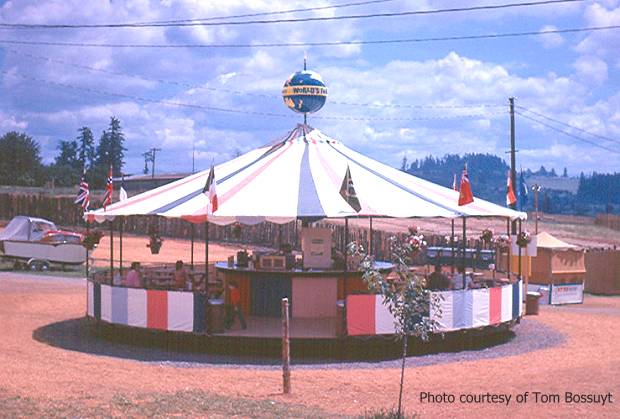 |
||||||||||||||||
|
Damascus was the site of one of the largest gatherings to celebrate Oregon’s Centennial in 1959. It was so popular that it became a three-year celebration and in 1962 was the site of the Little World’s Fair to celebrate the Man of the Past. It was a contrast to Seattle, the site of the actual World’s Fair, which welcomed the world to celebrate Man in Space. |
||||||||||||||||
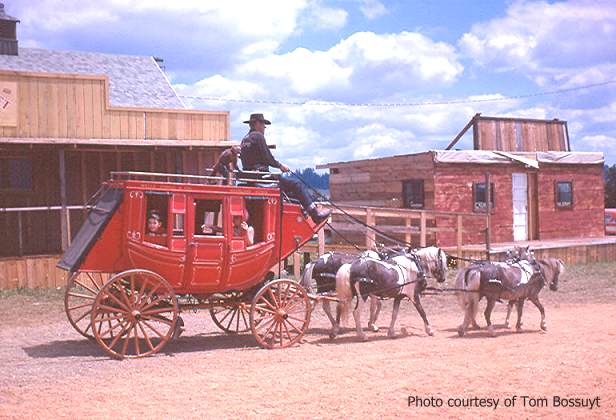 |
||||||||||||||||
|
Stagecoach rides were popular in the Frontier Village. |
||||||||||||||||
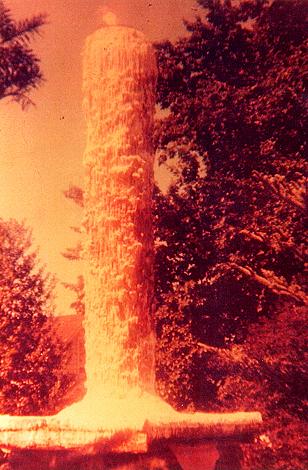 |
||||||||||||||||
|
The main attraction at Damascus was the Centennial Peace Candle. It was made from 20 tons of candle wax collected by children in and around Damascus. With the help of the Marines, all the ingredients needed to build the candle were taken to George Livingston’s house. The Marines cut and welded oil drums together to make a mold. The wax was melted with a plumbers ladel and the hot wax was pumped up into the mold. The finished candle was 21 and 1/2 feet tall and it was 35 inches across. The Marines were enlisted again to move the finished four-ton candle to Main Street in Damascus. The candle was lit on June 14, 1959 and it burned at the rate of one inch every 36 hours. The candle’s flame burned for 100 days. A concrete and steel replica was built in 1962 and it stands today as a monument to the original Centennial Peace Candle. Save for a couple buildings that remain, the Candle Monument is the only remnant from the Little World’s Fair in Damascus. |
||||||||||||||||
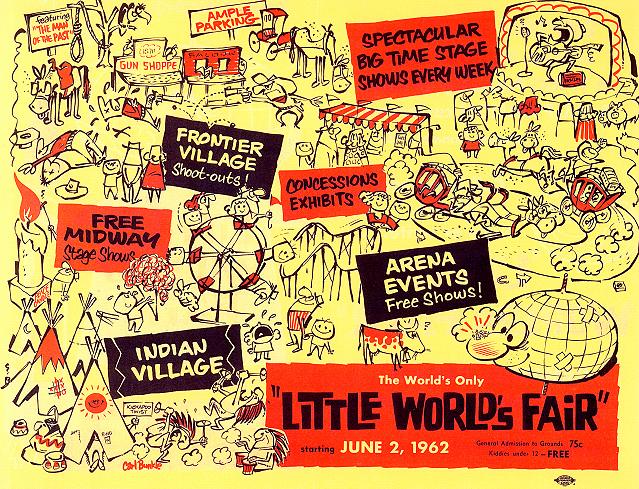 |
||||||||||||||||
|
The 22-acre site included a Midway, a Stockade, an Indian Village where Indians from all over the Northwest camped in TeePees, a Frontier Town complete with Gunfights and an old unpainted barn that was converted into an Opera House. The Frontier Town consisted of the Barlow Trail Saloon, a Blacksmith Shop, a Saddle Shop, a Hotel and a City Hall with a Jail. There was even a Town Newpaper called the Damascus Pioneer and a Stage Coach provided rides around the fairgrounds. The Damascus Frontiers performed at the Saloon and the outdoor Amphitheater provided a place for Hollywood Stars to perform. Oregon’s Governor, Mark Hatfield, visited Damascus during the Centennial Celebration. |
||||||||||||||||
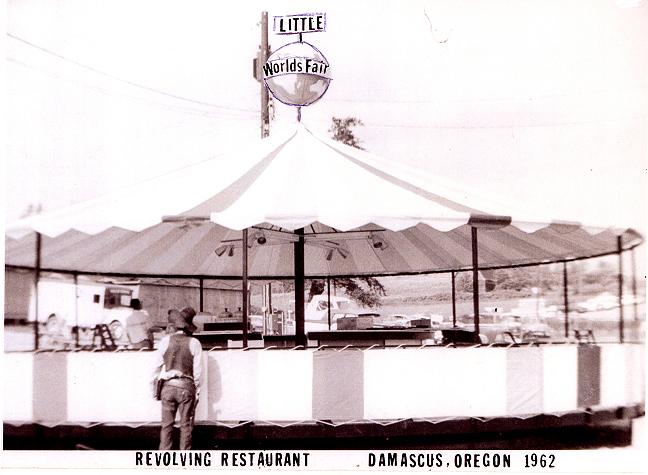 |
||||||||||||||||
|
Seattle had the Space Needle, with a revolving restaurant, and Damascus had its own Revolving Restaurant, The Carousel. A horse was used to keep the Restaurant moving in circles. I am told that the unique horse-drawn carousel restaurant eventually made its way to Seattle, where it was later sold for scrap. |
||||||||||||||||
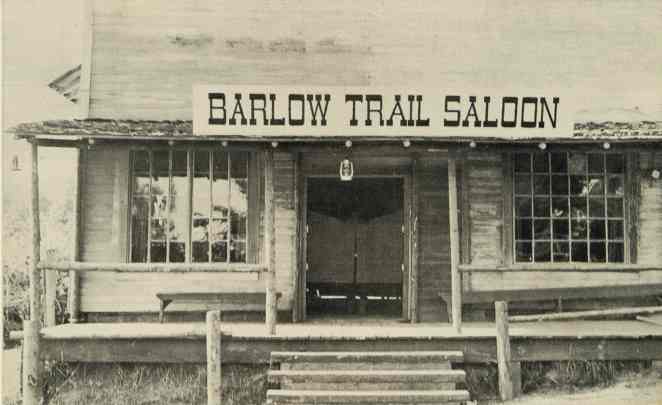 |
|
The Barlow Trail Saloon. |
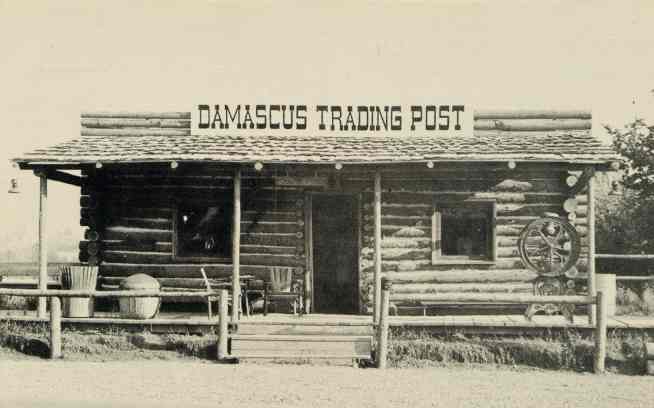 |
|||||||||||||
|
The Trading Post. |
|||||||||||||
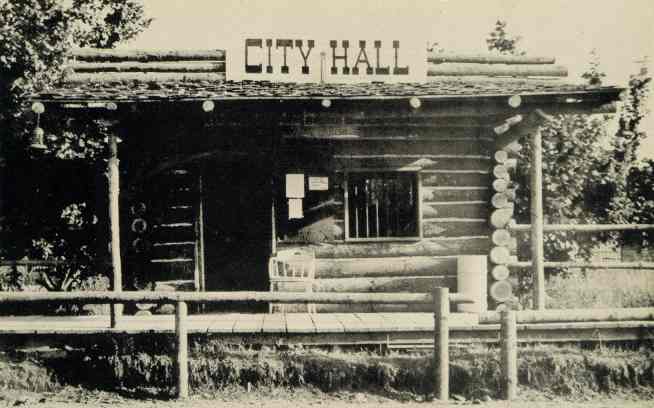 |
|||||||||||||
|
The Jail in City Hall would be a busy place at times. |
|||||||||||||
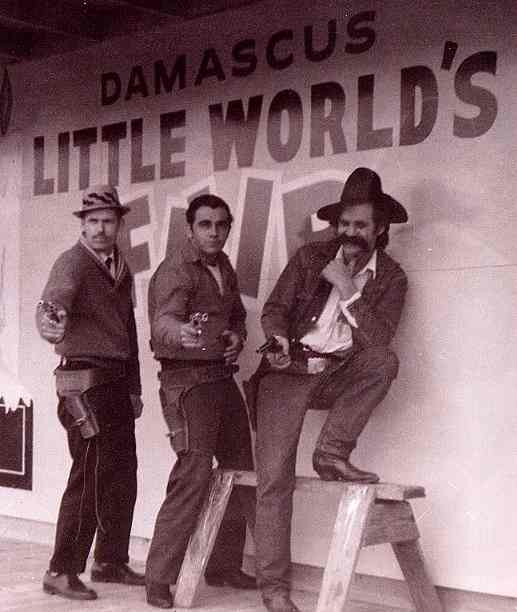 |
|||||||||||||
|
The other thing I remember about Damascus was the Gunfights. Smokey Humbird (pictured above right) was a local actor who brought Hollywood Stars to Damascus for gunfights. He went on to perform in a number of movies and television shows. Back in 1962, westerns ruled Primetime TV. I remember getting home from school and watching westerns like Wagon Train, the Rifleman and Wanted: Dead or Alive every day. On Saturday mornings, it was Roy Rogers, Rin Tin Tin and Sky King. Sky King visited the Damascus Gunfights as did other stars who happened to be filming or visiting Oregon. |
|||||||||||||
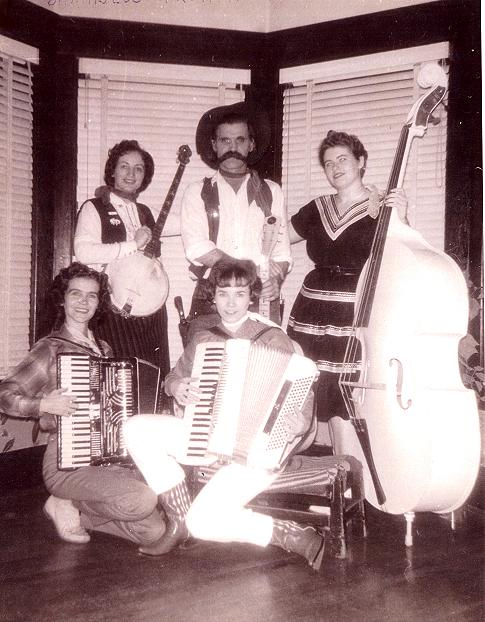 |
|||||||||||||
|
Smokey’s wife Alma (upper left), was at his side in several of the movies. They were very talented musically and they sang and played musical instruments in their own band, the Damascus Frontiers. |
|||||||||||||
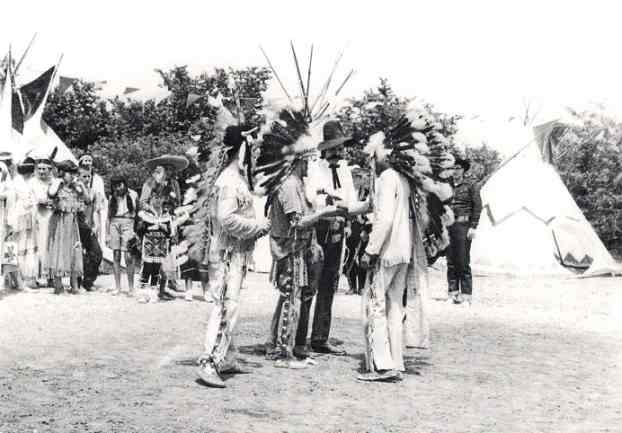 |
|||||||||||||
|
Indian Camp at the Oregon Centennial and Little World’s Fair at Damascus. |
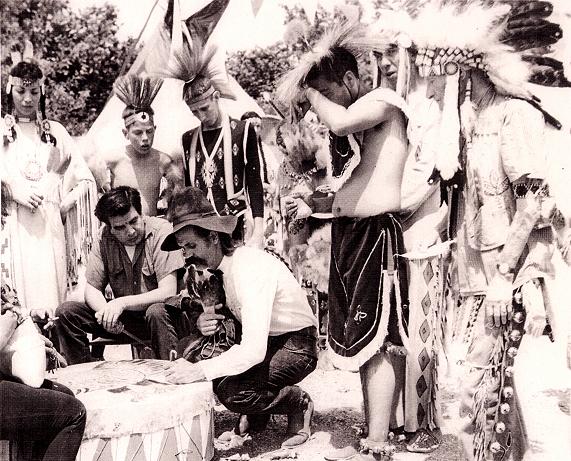 |
||||||||||||||||||||
|
Smokey’s Blood Brother Ceremony at the Indian Village. |
||||||||||||||||||||
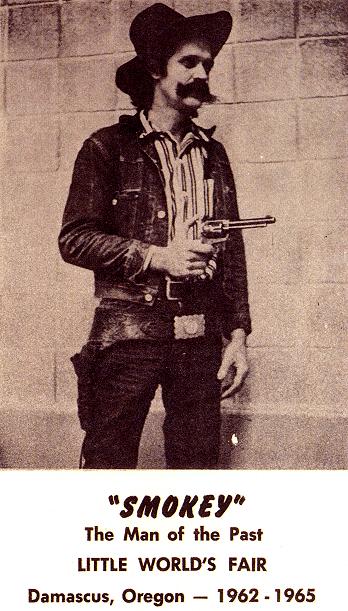 |
||||||||||||||||||||
|
Smokey Humbird -- 1920 - 2002 |
||||||||||||||||||||
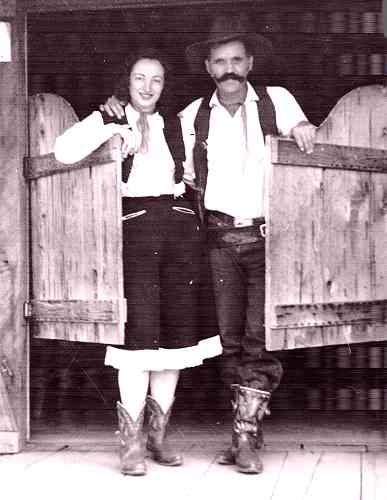 |
||||||||||||||||||||
|
Smokey and Alma at the Barlow Trail Saloon in 1959. |
||||||||||||||||||||
|
A very special Thank You to Alma Humbird who provided pictures and information about Damascus, “The Smallest Town With The Biggest Ideas.” |
||||||||||||||||||||
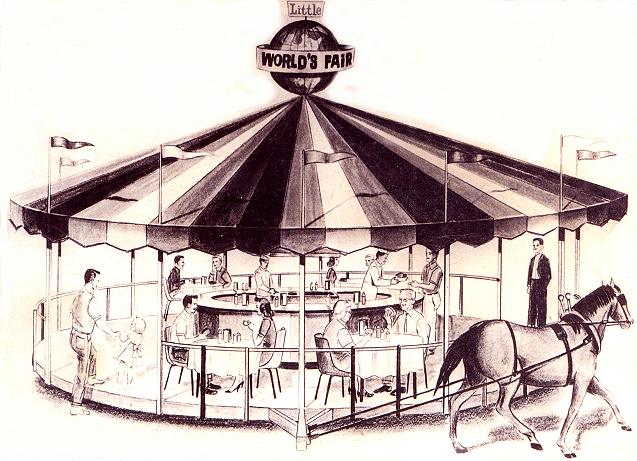 |
||||||||||||||||||||
|
Last updated 10-28-16 |
||||||||||||||||||||
|
copyright © 2017 PdxHistory.com |